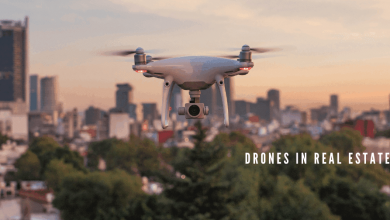Famous.ai Review: Can This AI App Builder Really Replace Human Developers?

In the not-so-distant past, building a software product was a high-stakes endeavor. It required months of development, five- or six-figure budgets, and a deep bench of engineers, designers, and infrastructure experts. For startups and solo creators, this created a significant barrier to innovation.
Today, however, artificial intelligence is upending the traditional software development pipeline, and Famous.ai is one of the platforms leading that charge. This AI-powered app builder promises to generate full-scale applications based on plain-English input, including production-ready code, backend architecture, and direct deployment tools.
But how far does this automation go? And can non-technical users really build sophisticated apps without writing a single line of code?
What Is Famous.ai?
Famous.ai is a no-code, AI-driven app builder that transforms written ideas into functioning applications. It enables users to create websites, native mobile apps, and even blockchain-based projects without the need for manual coding or third-party development.
The premise is simple: instead of hiring a developer or learning to code, users describe their app idea in natural language. From there, Famous.ai’s system takes over – automatically designing, building, and deploying the application. This applies to everything from the UI to the database to the API logic.
Where traditional no-code platforms offer drag-and-drop interfaces with limited flexibility, Famous.ai aims to deliver an accurate software engineering pipeline powered entirely by AI.
How Famous.ai Works: From Sentence to Software

Famous.ai simplifies development into a 5-step process:
1. Describe: Users begin by describing what they want to build using everyday language. For example, “I want an app that allows users to book personal trainers, with scheduling, payments, and reviews.”
2. Generate: The system interprets the request and generates the complete software stack, including frontend components, backend logic, databases, and infrastructure, all tailored to the specified functionality.
3. Customize: Through an intuitive interface, users can tweak the app by typing additional instructions. Want to change the color scheme? Add a subscription model? Integrate with Stripe? The AI responds in real time.
4. Deploy: Once the app is ready, it can be deployed directly to the web or mobile stores. Hosting, databases, and even security configurations are managed automatically.
5. Iterate: Users can continue to refine and scale the app post-launch. Updates can be made with additional prompts, and the app evolves without downtime or complex migrations.
This conversational approach to development eliminates the steep learning curve associated with code-based frameworks or even traditional no-code tools.

What Types of Apps Can You Build?
One of the most compelling aspects of Famous.ai is its range of supported outputs. The platform supports:
1. Web Applications
Whether you want to build a landing page or a complex SaaS platform with all the bells and whistles, the platform can create ready-to-go web applications that scale.
● Dynamic websites, marketplaces, and full SaaS platforms
● Built-in user authentication, payments, and admin dashboards
● Fully responsive design across devices
● Built on React and Node. JS-style edge functions
2. Mobile Apps
● Native iOS and Android apps (not just web views) using React Native
● Support for automated App Store and Google Play deployment
● Push notifications, offline access, and smooth UX
● Automatic handling of app store policies and packaging
3. Web3/Crypto Projects
● NFT marketplaces, DAO platforms, and DeFi dashboards
● Smart contract generation and deployment (Ethereum, Polygon, etc.)
● Tokenomics modeling and wallet integration
● Real blockchain logic, not just UI templates
This multi-surface capability makes Famous.ai especially attractive to modern builders who want to launch cross-platform products with minimal friction.
Key Differentiators
Famous.ai isn’t the only no-code builder on the market, but several features make it stand out:
1. End-to-End Delivery
Most no-code platforms stop at prototyping or frontend visuals. Famous.ai generates production-ready apps, complete with APIs, databases, authentication systems, and scalable architecture.
2. Native Mobile Publishing
Unlike many competitors that require downloading code and running terminal commands, or that require a Mac, with Famous.ai, you don’t need to download anything. You can submit to the iOS App Store (iPhone) and Google Play (Android) directly from the Famous.ai website. 3. Blockchain and Web3 Support
Smart contract deployment is integrated directly into the workflow. Users can generate ERC-20 tokens, NFT contracts, or DAO voting logic – all without needing Solidity expertise.
4. Full Code Ownership
Perhaps one of the most developer-friendly policies: users can download their entire codebase, self-host it, or even pass it to an in-house team for further work. There’s no platform lock-in.
5. Built-in Infrastructure
Famous.ai includes automated DevOps, CI/CD pipelines, database provisioning, and scalable hosting. Users don’t need to think about deployment strategy – it’s baked in.
Who Is Famous.ai For?
Famous.ai targets a wide range of user personas, including:
● Startup founders looking to quickly launch MVPs or test business ideas without hiring a dev team.
● Solo entrepreneurs and creators who want to monetize content, create tools for their audience, or build digital products without a tech co-founder.
● Small businesses that need internal tools, client portals, or lightweight mobile apps but don’t have internal engineering capacity.
● Agencies and freelancers aim to deliver client work more efficiently while maintaining control over the final product.
● Crypto builders aiming to spin up blockchain projects without in-house Solidity developers.
By simplifying the entire development stack, Famous.ai makes software creation accessible to a much wider pool of innovators.
Pricing
Famous.ai uses a simple subscription model that scales with you. Whether you’re a solo creator trying out the software or a large team shipping lots of apps, there’s a plan that fits.
You can start on a generous free plan to explore the core features and spin up public projects. The daily interactions are capped, but it’s plenty to get a real feel for how building with Famous.ai works before you spend a penny.
From there, individual developers and small teams can progress through paid tiers that increase their monthly message limits and unlock additional features, such as custom domains, faster build queues, and the option to remove Famous.ai branding. The higher you go, the better the discounts on any overage usage.
If you’re a power user or a growing team, the mid-tier plans are built for heavier workloads. And when you’re operating at enterprise scale, Famous.ai offers custom pricing with tailored perks. This includes perks like dedicated support, priority infrastructure, SLAs, and advanced security to meet organizational requirements.
Final Verdict
Famous.ai is a meaningful step toward making software creation truly accessible. Its knack for spinning up production-ready apps across web, mobile, and Web3, Famous.ai represents a bold reimagining of how software is built. By merging conversational AI with full-stack automation, it offers a genuinely new way for individuals and teams to transition from concept to product without requiring engineers.
It won’t replace highly customized enterprise software or experienced development teams in every scenario. But for 80% of the applications that startups, creators, and small businesses want to build, Famous.ai offers a dramatically faster and more cost-effective solution.
For those seeking to launch real, working applications in a matter of hours, rather than months, Famous.ai is a platform worth serious consideration.





